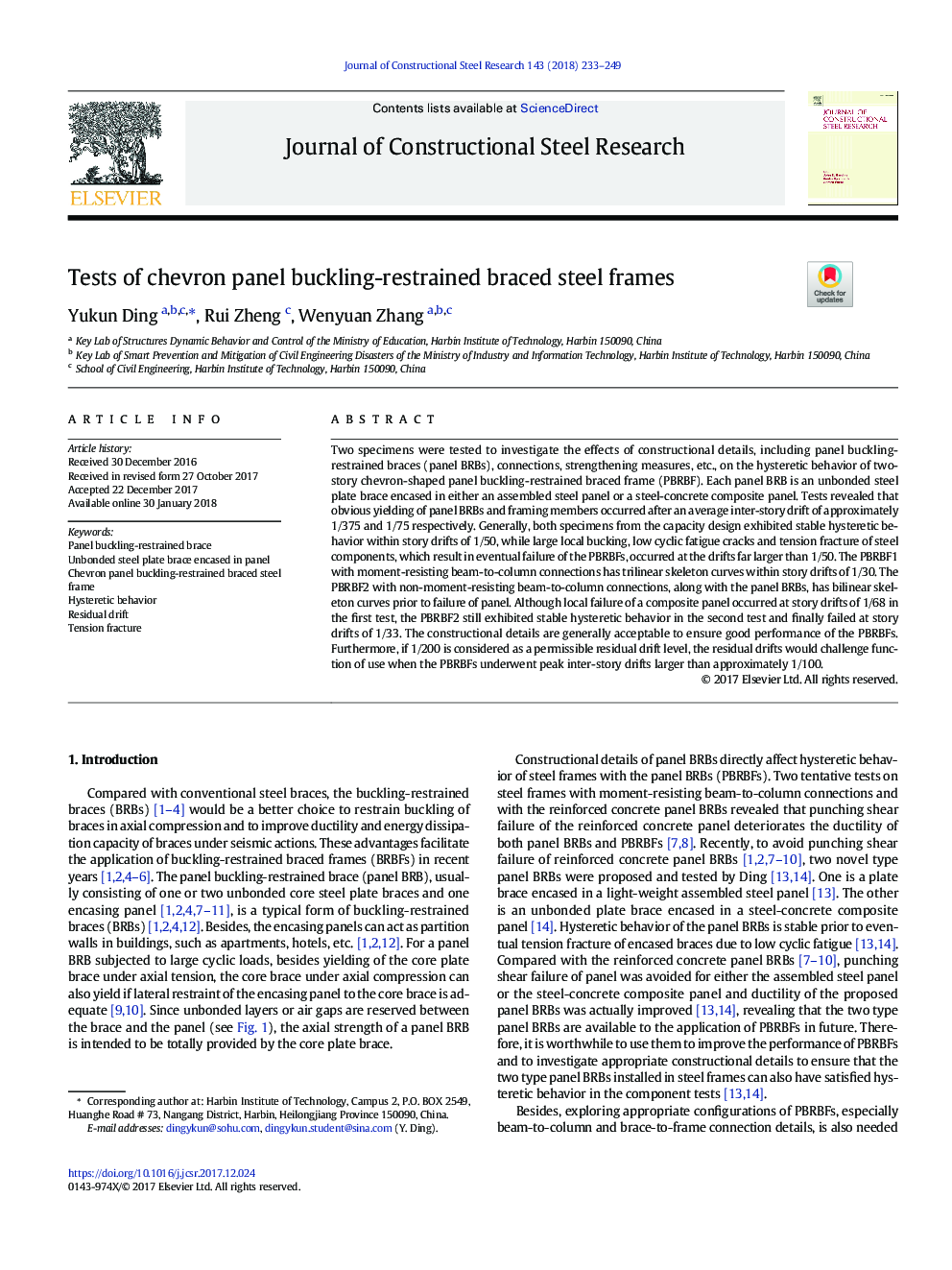| Article ID | Journal | Published Year | Pages | File Type |
|---|---|---|---|---|
| 6751001 | Journal of Constructional Steel Research | 2018 | 17 Pages |
Abstract
Two specimens were tested to investigate the effects of constructional details, including panel buckling-restrained braces (panel BRBs), connections, strengthening measures, etc., on the hysteretic behavior of two-story chevron-shaped panel buckling-restrained braced frame (PBRBF). Each panel BRB is an unbonded steel plate brace encased in either an assembled steel panel or a steel-concrete composite panel. Tests revealed that obvious yielding of panel BRBs and framing members occurred after an average inter-story drift of approximately 1/375 and 1/75 respectively. Generally, both specimens from the capacity design exhibited stable hysteretic behavior within story drifts of 1/50, while large local bucking, low cyclic fatigue cracks and tension fracture of steel components, which result in eventual failure of the PBRBFs, occurred at the drifts far larger than 1/50. The PBRBF1 with moment-resisting beam-to-column connections has trilinear skeleton curves within story drifts of 1/30. The PBRBF2 with non-moment-resisting beam-to-column connections, along with the panel BRBs, has bilinear skeleton curves prior to failure of panel. Although local failure of a composite panel occurred at story drifts of 1/68 in the first test, the PBRBF2 still exhibited stable hysteretic behavior in the second test and finally failed at story drifts of 1/33. The constructional details are generally acceptable to ensure good performance of the PBRBFs. Furthermore, if 1/200 is considered as a permissible residual drift level, the residual drifts would challenge function of use when the PBRBFs underwent peak inter-story drifts larger than approximately 1/100.
Keywords
Related Topics
Physical Sciences and Engineering
Engineering
Civil and Structural Engineering
Authors
Yukun Ding, Rui Zheng, Wenyuan Zhang,
